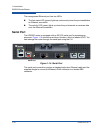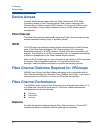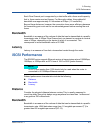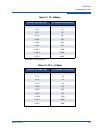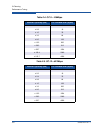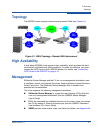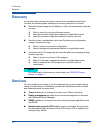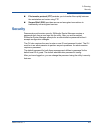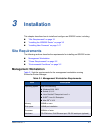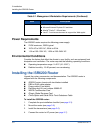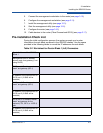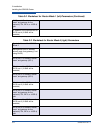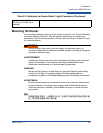
2–Planning
Recovery
2-8 ISR651101-00 J
Recovery
You should have a process in place to recover from a possible router failure.
Consider the following when developing a recovery process for the router:
Save all firmware image files (updates) in a safe, well-known place, because
you may:
Want to revert to a previous firmware version
Need the firmware image when replacing a single-blade router
Need the firmware image when adding a router to your site
Save the router’s configuration (as a new file) after every configuration
change, because you may:
Want to revert to a previous configuration
Need to configure a replacement blade in a single-blade router
Save the router’s LUN mappings (as a new file) after every mapping change,
because you may:
Want to revert to a previous LUN mapping
Need to LUN-map a replacement blade in a single-blade router
Want to duplicate the LUN mapping on a second router (for
redundancy)
Services
You can configure your router to suit the demands of your environment using a
variety of router services. Familiarize yourself with the following router services
and determine which ones you need:
Telnet enables you to manage the router over a Telnet connection.
Router management provides for out-of-band management of the router
with SANsurfer Router Manager.
SNMP enables you to monitor the router using third-party applications that
use SNMP.
Network time protocol (NTP) enables you to synchronize the router and
the workstation dates and times with an NTP server. NTP is disabled (not
configured) by default.
NOTE
For more details on recovering a router blade, see “iSR6200 Chassis
Blades” on page 7-1.



